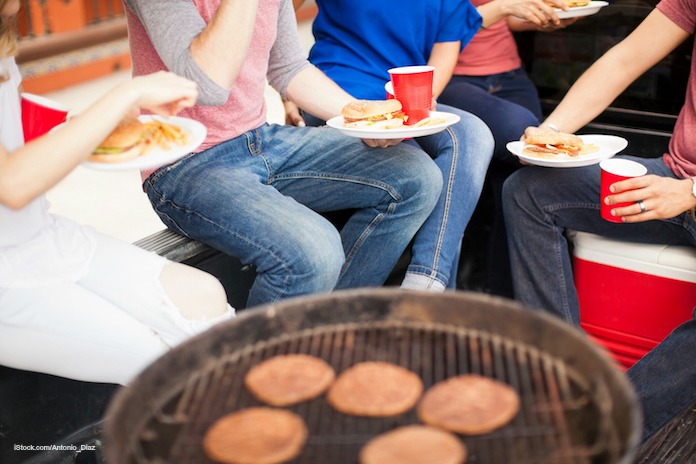FOodsafety.gov is offering six tips to eat safely when you’re camping. The blog post is slanted toward Latinos, since about 12% of new campers are Latino.

Outdoor cooking requires planning, especially transporting, storing, and cooking food safely. These six tips will help you pack items you’ll need while preparing food outdoors.
First, look for camping-friendly foods that are light to carry and can be safe without refrigeration. Cold foods can be brought along for the first day, but after that you will need shelf-stable foods.
Cleaning supplies are another must. Disposable wipes, biodegradable soaps, and paper towels or clean towels are necessary. If there isn’t a source of clean running water where you are planning your campout, you should boil lake or river water or use sanitizing tablets for hand and dishwashing.
Cooking gear should be planned for food safety. You’ll need separate knives for raw meats and other foods, separate cutting boards for raw meats and foods eaten without cooking, separate containers for raw and cooked foods to avoid cross-contamination, and a food thermometer.
That food thermometer is necessary whenever you are cooking meat or poultry products.A reliable food thermometer is the only way to tell whether or not the food you are preparing is safe to eat. Color is not a reliable indicator of doneness. Bring along a list of safe internal final cooking temperatures on your phone.
A cooler is necessary for all perishable foods. Always use frozen clean, water-filled carton or gel packs to keep food below 40°F. Raw meats should be packed below ready-to-eat foods to prevent cross-contamination. Also double wrap raw meat and poultry to prevent leaking juices.
Pack foods in the reverse order you plan to eat them. The first foods packed should be the last foods used.
And pack a separate cooler for beverages and food. Every time the cooler is opened, the time food stays safe will decrease.
Plan on bringing bottled water for drinking. Water in lakes and streams is not safe to drink even if it looks crystal clear. If you can’t carry enough bottled water, bring purification tablets (NOT sanitizing tablets used for hand washing water), and water filters.
Enjoy your camping adventure with these tips. And stay safe.




